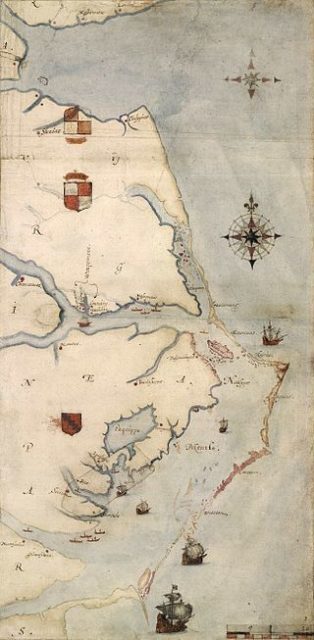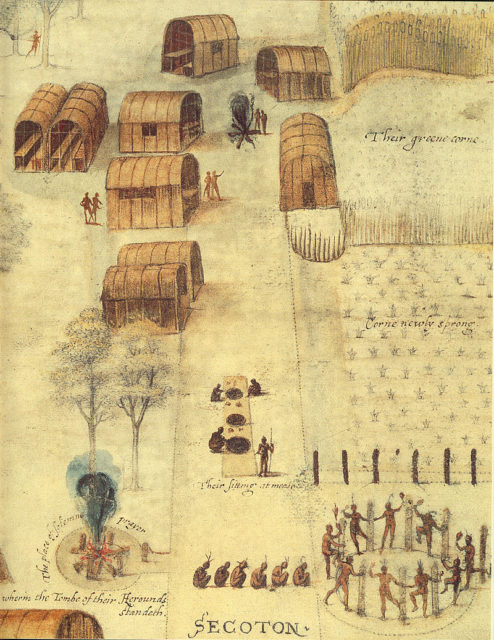In the 1500’s a strange occurrence happened, 100 settlers mysteriously vanished, and now a developer is trying to preserve the site in North Carolina. The man’s name is Michael Flannelly, and the site is in rural Bertie County.
The clues to this mystery might be in a waterfront tract where developers are going to build thousands of condos. Flannelly is asking people to donate millions of dollars so he can potentially buy out the developers to save the 1,000-acre building site.
“I want to see the site preserved,” said Flannelly, who lives on a boat he docks in Norfolk, Virginia. “I think it would make a fantastic place for people to come to.”
The Lost Colony, which was England’s first settlement in North America, has puzzled historians for centuries. In 1587, 116 settlers landed on Roanoke Island and were led by John White. Soon after the party arrived, he headed back to get more supplies, since they were running low.

Delayed by the ongoing war between England and Spain, he wouldn’t return until 1590. When he did finally return, he was shocked to find everyone had vanished.
If you have ever seen the show “Supernatural” then this might jog your memory. The only thing he found was the word “CROATOAN” scratched into a post and “CRO” lettered on a tree trunk. This has lead historians to believe that the settlers moved south to live with Native Americans on what is now Hatteras Island.
Though now some archaeologists believe that this is not the case, they believe that the colonists made their way to an inland site south of the Chowan River Bridge, which is almost 50 miles from Roanoke.

This idea first gained traction in 2012, after a researcher at the British Museum in London announced they had found a drawing which depicted a fort under a patch of a map drawn by White in the 1580’s.
The map shows that the fort is in an area of Bertie County, where archaeologists have found English pottery and signs of a Native American village. The archaeologists found it during a survey dig which was required by the state before Flannelly and his partners could get the permits they need for the subdivision that was never built.
The site has since been named Site X, workers have found more evidence that the settlers may have moved to this exact spot. The evidence includes bale seals, which were used to verify cloth quality, and 16th-century nails.
Flannelly must buy out his former development partners before the preservation can happen, though. He estimates that it will take between $4 million and $5 million dollars to do so, however. He will also need a conservation group willing to help raise and preserve the land.
Addressing accusations that he is only in it for the profit, Flannelly has stated that he will receive only 8 percent of any buyout, along with a tax credit. The proposed buyout is much less than the original $10 million spent on the land by the development partners.
Jeff Linton, a spokesman for Forest City, said the officials are aware of the archaeological finds but have no updates about the status of the land, and Forest City no longer is in the land development industry.
When archaeologists found historical items on the property, Flannelly called for those areas to be cordoned off as green space and not developed. Flannelly himself owns 15 acres of the land that may include items from the Lost Colony, though when he personally bought the acres, he had no idea about the artifacts. “They felt the same I did,” he said of the settlers. “That’s the best piece of property on the whole tract.”
Flannelly has since turned to North Carolina’s Coastal Land Trust, a nonprofit organization that has preserved more than 65,000 undeveloped acres in 31 counties since 1992. An attorney and northeast regional director for the trust named Lee Leidy, said that the officials of the area hope to view the property later this month, the Mail Online reported.

“It’s fascinating,” she said. “It’s one that we’re very excited to take a look at and learn more about.”
The raising of the funds required to preserve this site presents a challenge, however. There are limited conservation dollars that must be spread out between many projects. Arwin Smallwood, chairman of the history department at A&T State University, said: “If it’s done properly, I think it could be tremendous. Right now in Bertie County, you can have a true sense of history and what the landscape was like.”
In Dare County, there is a performance of “The Lost Colony” which draws in thousands of tourists to its outdoor amphitheater on Roanoke Island. Now Bertie County has adopted the settlers as their own as well.
Over 300 people attended the first Lost Colony festival in Windsor in April. The county is also acquiring 137 acres for a nearby park. Billy Smithwick, the town fire chief and tourism manager, had this to say: ”I think it would be quite a tourist attraction, The Lost Colony is the greatest mystery in history that there is.”
